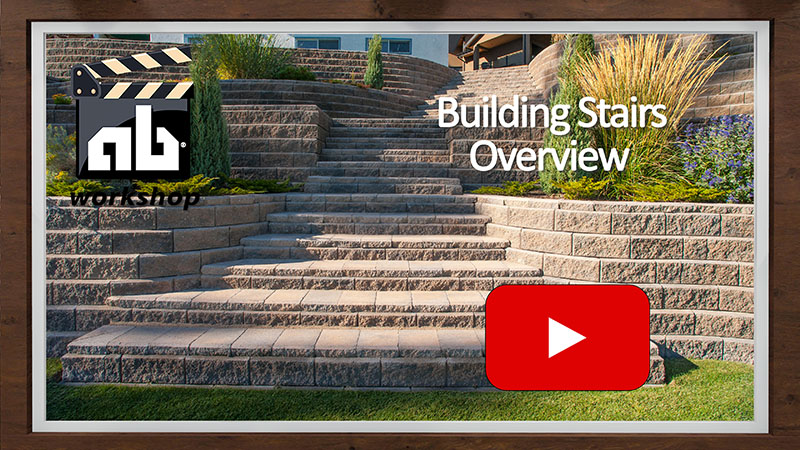Stairs
The steps shown here are general guidelines for building stairways. By understanding the basic installation elements, stairways can be easily incorporated into the retaining wall installation. Always check local code requirements before building any type of stair application.
Stair Design
Allan Block Wall Systems offer a variety of options for stairways
Stairs can be designed with flowing curves or straight lines. Curved sidewalls create a softer, natural look. Straight sidewalls and corners offer a crisp, traditional style; however they require AB Corner Blocks and take more time and custom cutting to build.
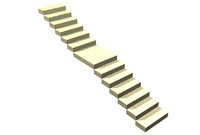
Break up long sets of steps with landings
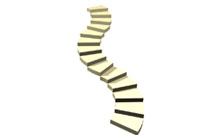
Add switchback curves to meander up the hill
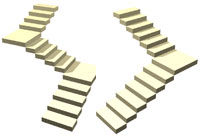
Drop in a turn and a landing to break the stair line
How Many Steps Do I Need?
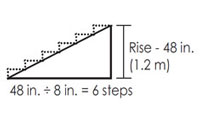
how many steps do I need?
Match your stairway design to the natural grade of your slope.
- On steep slopes, keep the blocks tight together. With Allan Block, you get an 8 in. rise and a 12 in. run. (200 mm rise and a 300 mm run).
- On gentle slopes, add pavers or other materials to increase the depth of the tread and length of the run.
- Landings can soften a long stairway and provide an easy way to tie sets of steps together.
Tackle Your Slope
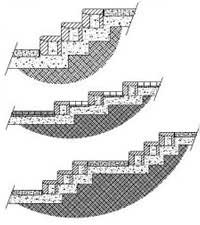
Match your stair design to your slope type
Match your stairway design to the natural grade of your slope.
- On steep slopes, keep the blocks tight together. With Allan Block, you get an 8 in. rise and a 12 in. run. (200 mm rise and a 300 mm run).*
- On gentle slopes, add pavers or other materials to increase the depth of the tread and length of the run.
- Landings can soften a long stairway and provide an easy way to tie sets of steps together.
Take Time to Build in Quality
Building stairs and steps requires careful planning, flexibility on the job site and an eye for detail. Be sure to allow adequate time for layout and building of stairs.
Basic Stair Construction
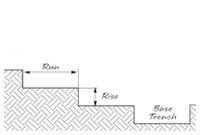
Excavate for stairs and compact.
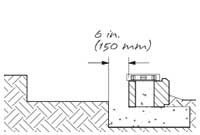
Install and level blocks on base material.
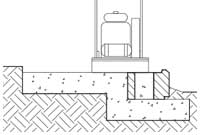
Backfill block cores and behind the block with wall rock. Compact.
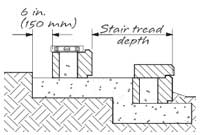
Install next stair course.
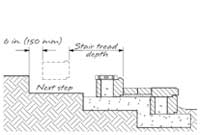
Install capstone and paver treads. Use sand under the pavers to level with AB Capstones
Our example here uses a base trench of 6 in. (150 mm) and a stair tread of AB Capstones and pavers.
For information on basic installation practices, see gravity retaining wall installation or reinfroced retaining wall installation for more details
- Excavate to the necessary depth and width for each stair riser and thoroughly compact the entire area to 95% Standard Proctor with a mechanical plate compactor.
- Check for level.
- Starting at the first step, fill the base trench with 6 in. (150 mm) of wall rock. Rake smooth.
- Compact and check for level. Stairs need extra compaction to avoid any settling later. Better compaction is achieved by backfilling and compacting in 4 in. lifts (100 mm) or less when able.
- Install blocks on the base material. Allow for a space of at least 6 in. (150 mm) behind the blocks for wall rock
- Adjust for level and alignment of each block as it’s installed.
- Install wall rock in the block cores, fill any space in front of and behind the block. When backfilling behind the blocks, fill the entire area that was earlier excavated to create the base for the next stair riser. This should produce a level base for the next set of risers. We recommend backfilling and compacting behind the block in 4 in. lifts (100 mm) to achieve better compaction when able.
- Rake wall rock smooth and compact with the first pass of the compactor directly on the tops of the block and then working in a path that runs parallel to the block. Compact to 95% Standard Proctor.
- Repeat this process for each additional course of steps needed.
Stair Building with AB Fieldstone
Stairs with AB Fieldstone
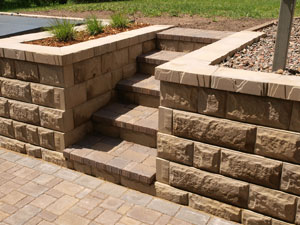
AB Fieldstone Stairs
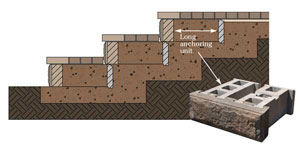
When building stairs, use the long anchoring units (LAU) with the facing units for quick and easy installation.
Salt for Ice Removal
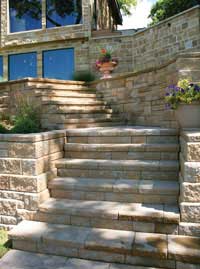
Stairs with AB Capstones
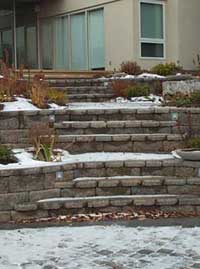
Stairs with AB Capstones
In colder climates, salt CANNOT be used on the blocks or AB Capstones as it will cause them to deteriorate. Use sand instead.
Stair Tread Options
- Allan Block's patented front lip provides a built-in edging that not only works well with AB Capstones, but also pavers, poured concrete, crushed rock, mulches and flagstones
- When using a rigid dimension tread material such as AB Capstones or landscape pavers, carefully plan the stair dimensions to reduce the amount of cutting required. Ensure stair treads are secured in place with a high strength construction adhesive for safe use.
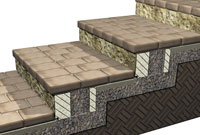
Stairs with Pavers
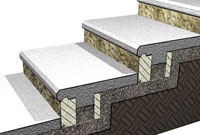
Stairs with Concrete
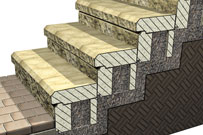
Stairs with AB Capstones
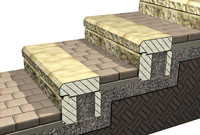
Stairs with AB Capstones and Pavers
Stair Applications
There are many different options available for stairs for your retaining wall project. Remember to always check the local building codes before construction.
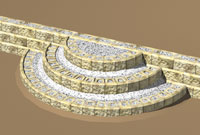
Curved steps parallel to retaining wall
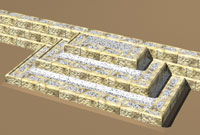
Square steps parallel to retaining wall
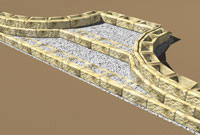
Curved steps into retaining wall face
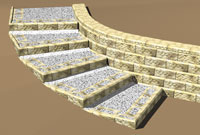
Curved steps with corners parallel to the retaining wall


